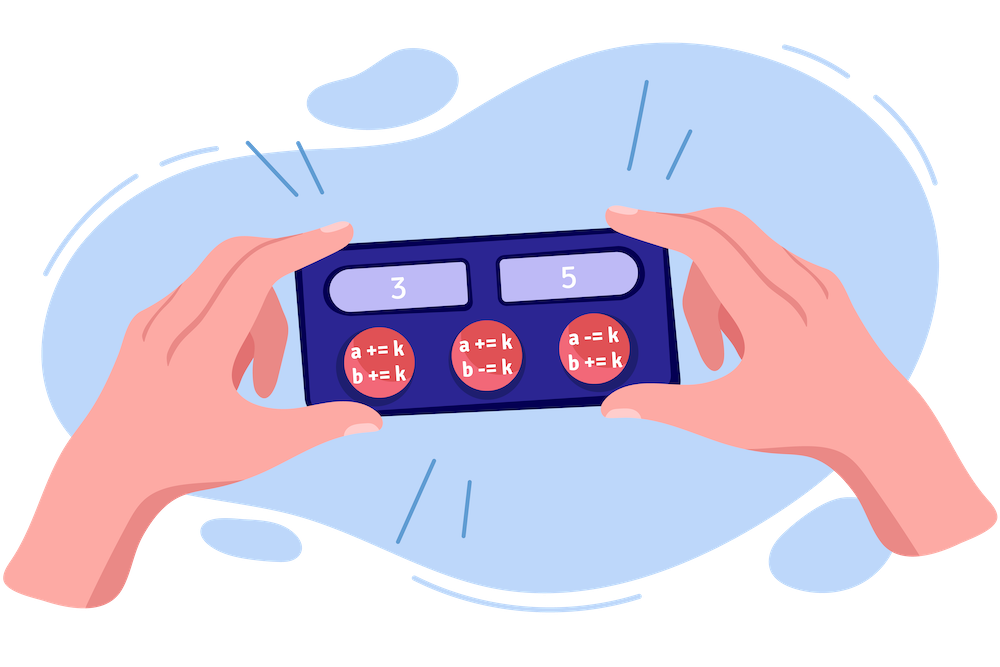CF1556A.A Variety of Operations
普及/提高-
通过率:0%
AC君温馨提醒
该题目为【codeforces】题库的题目,您提交的代码将被提交至codeforces进行远程评测,并由ACGO抓取测评结果后进行展示。由于远程测评的测评机由其他平台提供,我们无法保证该服务的稳定性,若提交后无反应,请等待一段时间后再进行重试。
题目描述
 William has two numbers a and b initially both equal to zero. William mastered performing three different operations with them quickly. Before performing each operation some positive integer k is picked, which is then used to perform one of the following operations: (note, that for each operation you can choose a new positive integer k )
William has two numbers a and b initially both equal to zero. William mastered performing three different operations with them quickly. Before performing each operation some positive integer k is picked, which is then used to perform one of the following operations: (note, that for each operation you can choose a new positive integer k )
- add number k to both a and b , or
- add number k to a and subtract k from b , or
- add number k to b and subtract k from a .
Note that after performing operations, numbers a and b may become negative as well.
William wants to find out the minimal number of operations he would have to perform to make a equal to his favorite number c and b equal to his second favorite number d .
输入格式
Each test contains multiple test cases. The first line contains the number of test cases t ( 1≤t≤104 ). Description of the test cases follows.
The only line of each test case contains two integers c and d (0≤c,d≤109) , which are William's favorite numbers and which he wants a and b to be transformed into.
输出格式
For each test case output a single number, which is the minimal number of operations which William would have to perform to make a equal to c and b equal to d , or −1 if it is impossible to achieve this using the described operations.
输入输出样例
输入#1
6 1 2 3 5 5 3 6 6 8 0 0 0
输出#1
-1 2 2 1 2 0
说明/提示
Let us demonstrate one of the suboptimal ways of getting a pair (3,5) :
- Using an operation of the first type with k=1 , the current pair would be equal to (1,1) .
- Using an operation of the third type with k=8 , the current pair would be equal to (−7,9) .
- Using an operation of the second type with k=7 , the current pair would be equal to (0,2) .
- Using an operation of the first type with k=3 , the current pair would be equal to (3,5) .